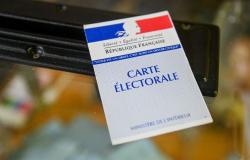At a time when artificial intelligence makes it possible to create a work in a few minutes, it takes six months of intense work for Mohammad Hossein Aghamiri to create a Persian illumination, perpetuating a centuries-old tradition in Iran.
Leaning over his drawing table, the artist concentrates: with an extra-fine cat-hair brush, he traces a thin curve with gold paint.
At 51, Mohammad Hossein Aghamiri is considered one of the Iranian masters of illumination, the art of illustrating and embellishing manuscripts or texts, which he has practiced for “more than 30 years”.
“There are probably about ten of us professionals” who still make a living from it in Iran, estimates Mohammad Hossein Aghamiri, who works alone in a quiet workshop near the centre of Tehran.
“It’s a very unique job, which requires a lot of patience and rigor. It’s not accessible to everyone,” he explains.
The slightest crooked line, even a tiny one, would break the symmetrical harmony of the “shamsa” (symbolic representation of the sun), a work of about 50 centimeters in diameter with intertwined abstract, geometric and floral motifs, which he began more than four months ago and which he plans to finish within “a month and a half.”
To paint, Mohammad Hossein Aghamiri uses natural pigments, such as lapis lazuli or saffron, gouache but also a lot of pure gold, which comes from China.
“Gold has a very strong visual attraction. And, as it is expensive, it reinforces the value of the work in the eyes of the person looking at it,” he explains.
– Success in the Gulf –
Coming from a family of artists, Mohammad Hossein Aghamiri presents himself as an heir to “artisanal traditions” deeply rooted in Iran, such as those of calligraphy, miniatures and hand-woven carpets.
Like the latter, illumination existed before the arrival of Islam in the 7th century, which seized it to illustrate the Koran. While continuing to embellish the poems and texts of Persian mythology, which Iranians are fond of, according to him.
Today, the artist sells some works in Iran, notably to museums, but especially in the Gulf countries, where the number of lovers of oriental and Islamic art continues to increase.
“80% of my works are purchased in the region, particularly in the Emirates and Qatar,” but “also in Turkey,” where this type of art is popular, he says.
Mohammad Hossein Aghamiri also gives online illumination courses to students based abroad, particularly in the United States.
He will soon be moving to England for family reasons, where he will also run workshops to teach his discipline, which presents notable differences from European illumination.
Having had its golden age in the Middle Ages, the latter is more figurative, reproducing human faces, animals and landscapes, and often illustrates biblical episodes.
In December 2023, UNESCO put the spotlight on the art of illumination by inscribing it on the list of intangible cultural heritage of humanity, at the request of several countries including Iran, Turkey, Azerbaijan and Uzbekistan.
“Twenty years ago, I didn’t have much hope” for the future of Persian illumination, Mohammad Hossein Aghamiri admits. “But things have changed and I see that this art is becoming more and more popular,” the artist rejoices.





